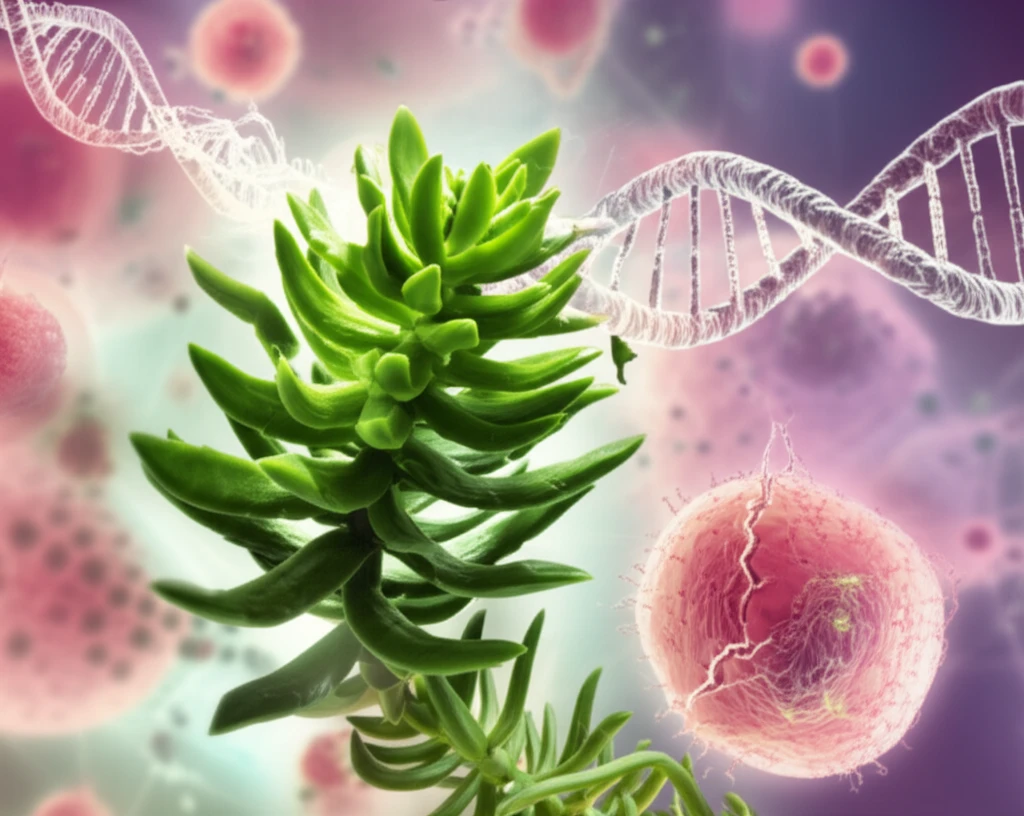
Ovarian Cancer Breakthrough: Can This Natural Herb Stop Tumor Growth?
"New research explores how Orostachys japonicus, a traditional medicine, could offer a novel approach to fighting ovarian cancer by targeting key cellular pathways."
Ovarian cancer remains a significant health challenge for women, often diagnosed at advanced stages. While surgery and chemotherapy are standard treatments, recurrence and drug resistance are frequent obstacles. This has fueled the search for alternative and complementary therapies, including those derived from natural sources.
One such natural remedy under investigation is Orostachys japonicus, a herb traditionally used in East Asian medicine to treat a variety of ailments, including inflammatory conditions and certain cancers. Scientists are increasingly interested in its potential to inhibit cancer cell growth and explore the underlying mechanisms.
Now, a new study sheds light on how a specific extract from O. japonicus might combat ovarian cancer. Researchers have found that an ethyl acetate fraction of O. japonicus extract (OJE) can effectively arrest the cell cycle and induce apoptosis (programmed cell death) in OVCAR-3 human ovarian cancer cells. The study details how OJE affects critical signaling pathways within these cancer cells, offering a promising avenue for further research and potential therapeutic development.
How Orostachys japonicus Stops Ovarian Cancer Cells

The study reveals that OJE's anticancer activity stems from its ability to interfere with the cell cycle, the tightly regulated process by which cells grow and divide. In OVCAR-3 cells, OJE treatment led to cell cycle arrest, preventing the cancer cells from multiplying uncontrollably. This arrest occurs at the sub-G1 phase, a point where cells are typically flagged for DNA damage or other abnormalities, leading to apoptosis.
- Reduced Cyclin E1/CDK2 Expression: OJE inhibits the production of Cyclin E1 and CDK2, proteins essential for the progression of the cell cycle from the G1 to S phase. By downregulating these proteins, OJE effectively puts a brake on cell division.
- Increased p53 and p21 Expression: OJE boosts the levels of p53 and p21, crucial regulators of the cell cycle. P53, often called the "guardian of the genome," triggers cell cycle arrest in response to DNA damage. P21, in turn, inhibits cyclin-CDK complexes, further reinforcing the arrest.
- Mitochondrial-Mediated Apoptosis: The study also found that OJE promotes apoptosis through the intrinsic (mitochondrial) pathway. This involves changes in the balance of Bcl-2 family proteins, which regulate mitochondrial membrane permeability. OJE treatment increases the Bcl-2/Bax ratio, ultimately leading to the release of cytochrome c from the mitochondria and activation of caspases, the executioners of apoptosis.
A Promising Natural Compound for Ovarian Cancer
This research provides compelling evidence that OJE from Orostachys japonicus exhibits significant anticancer activity against OVCAR-3 human ovarian cancer cells. By targeting the cell cycle, inducing apoptosis, and modulating MAPK signaling pathways, OJE demonstrates a multi-faceted approach to combating cancer growth.
While these findings are promising, it's important to remember that this study was conducted in vitro, meaning in a laboratory setting using cultured cells. Further research is needed to determine the efficacy and safety of OJE in in vivo models (animal studies) and, ultimately, in human clinical trials.
Nevertheless, this study opens up exciting possibilities for the development of novel ovarian cancer therapies based on natural compounds. Orostachys japonicus warrants further investigation as a potential source of effective and well-tolerated treatments for this challenging disease.
